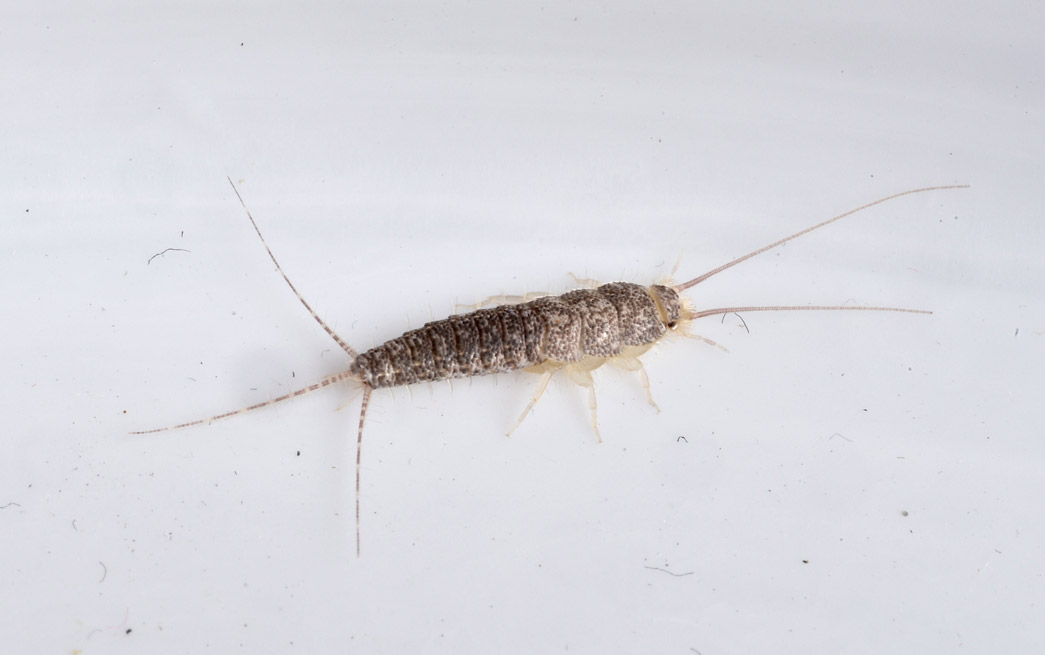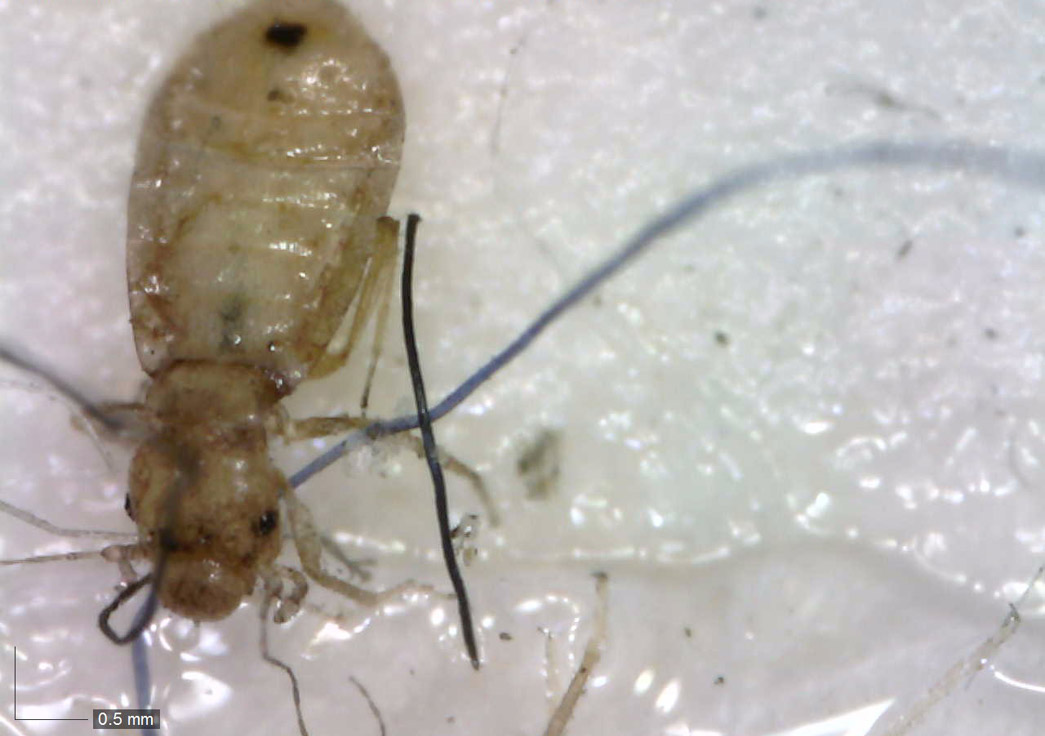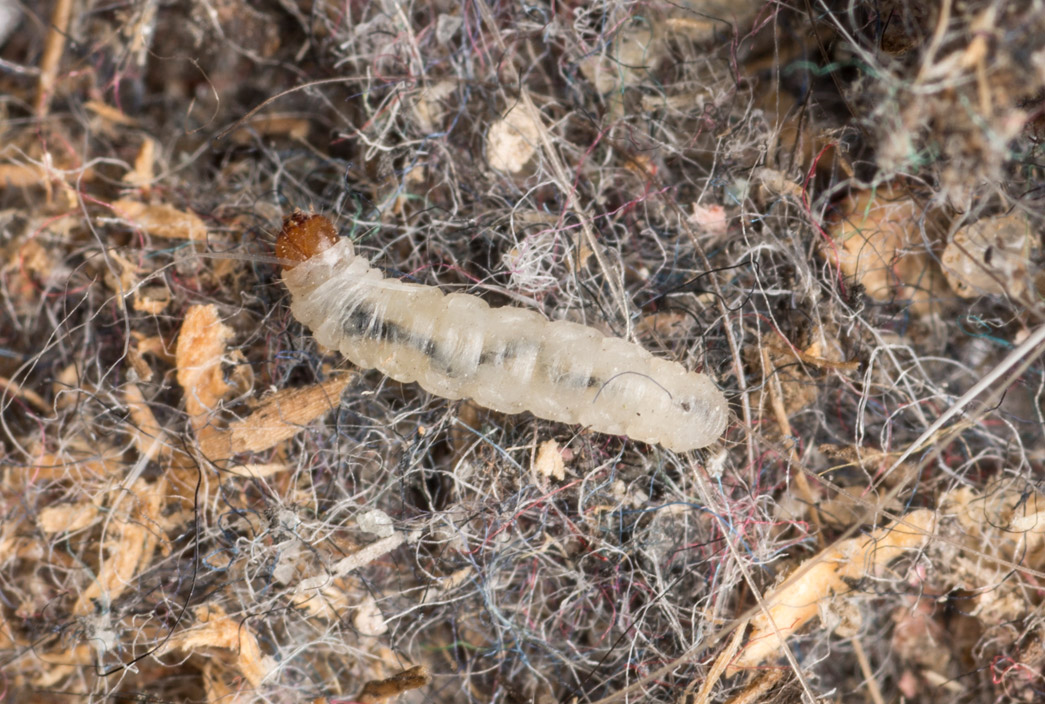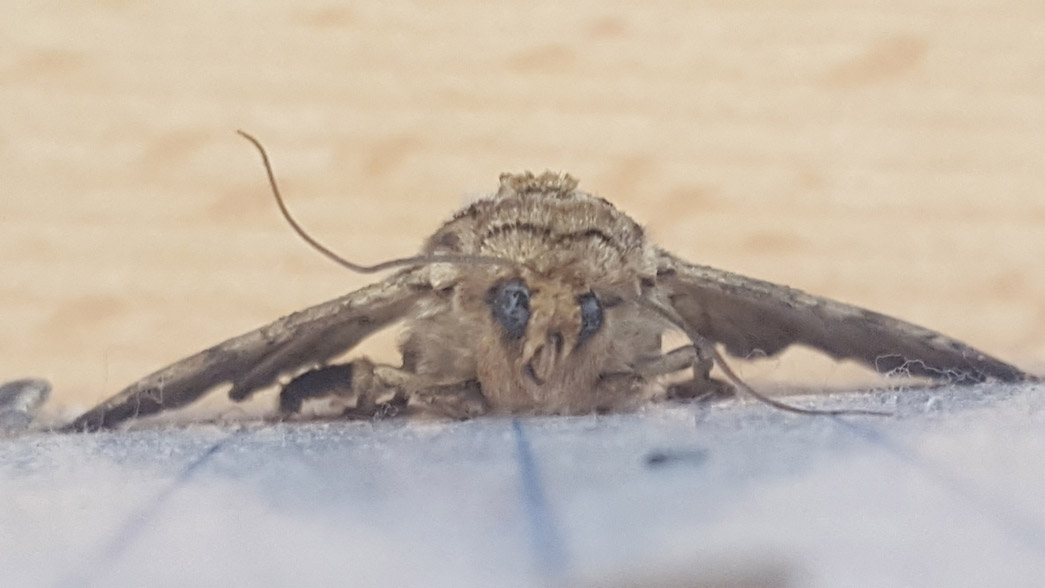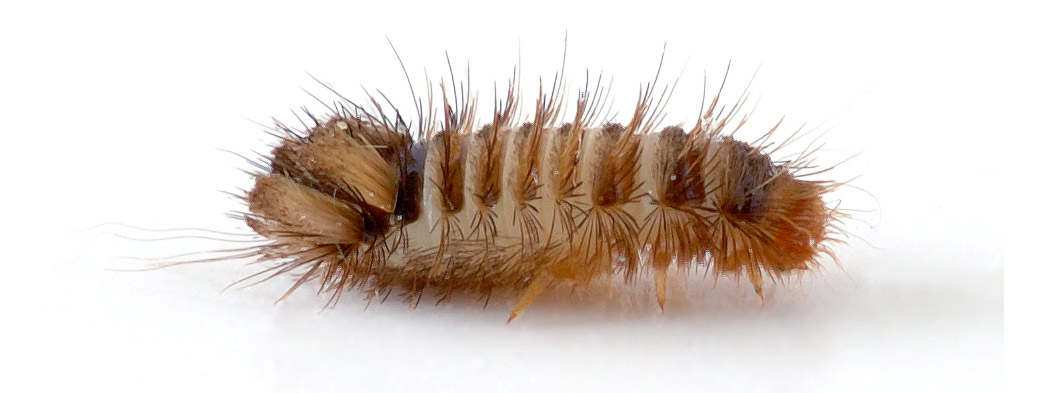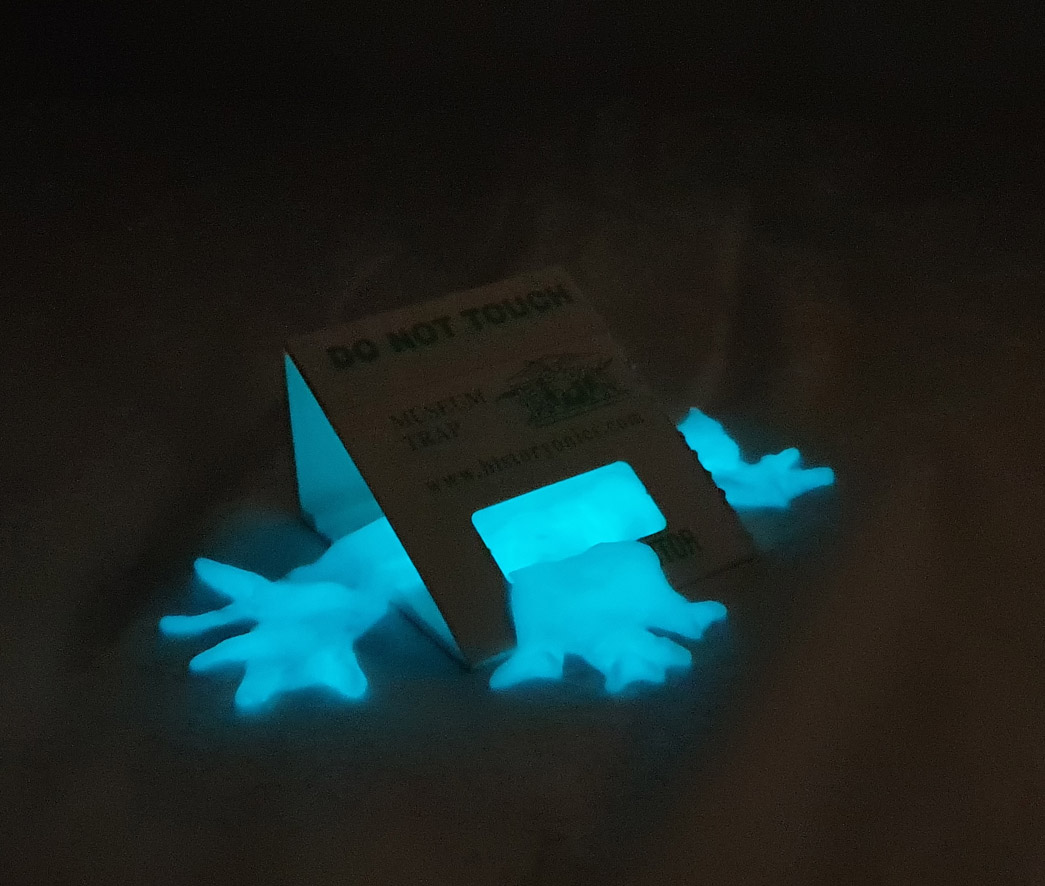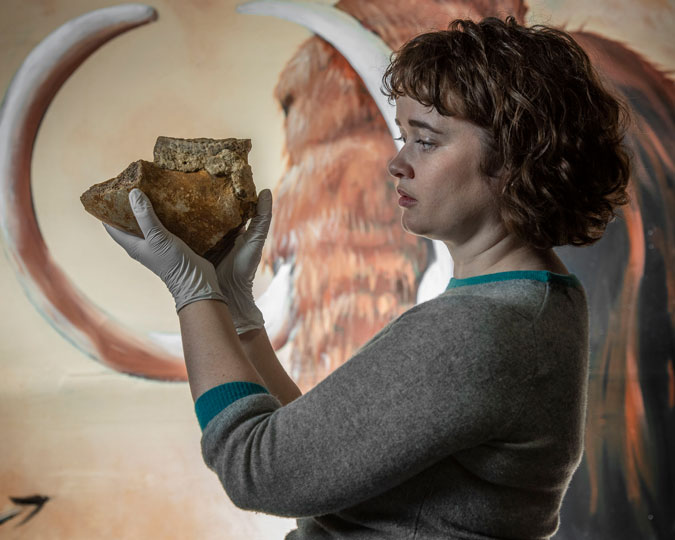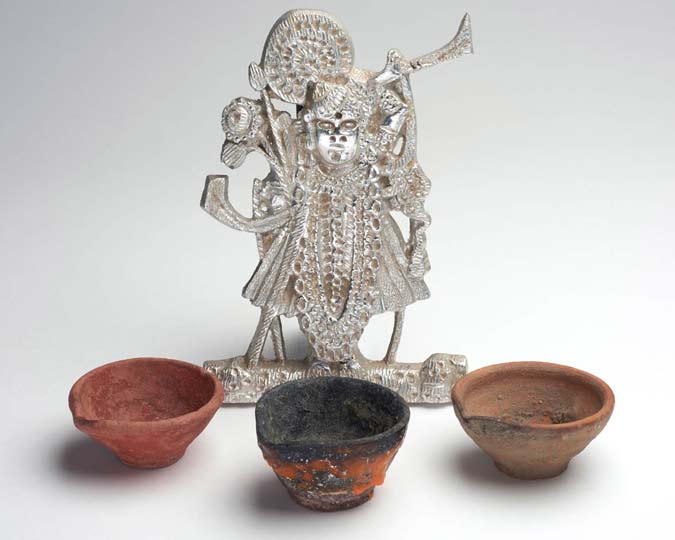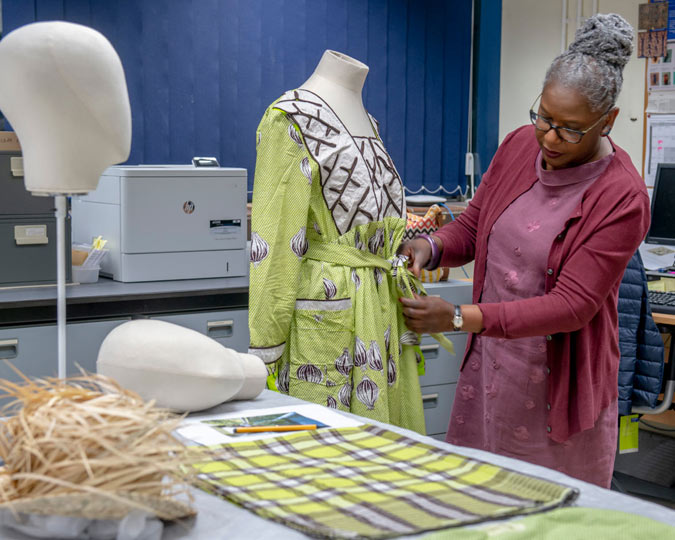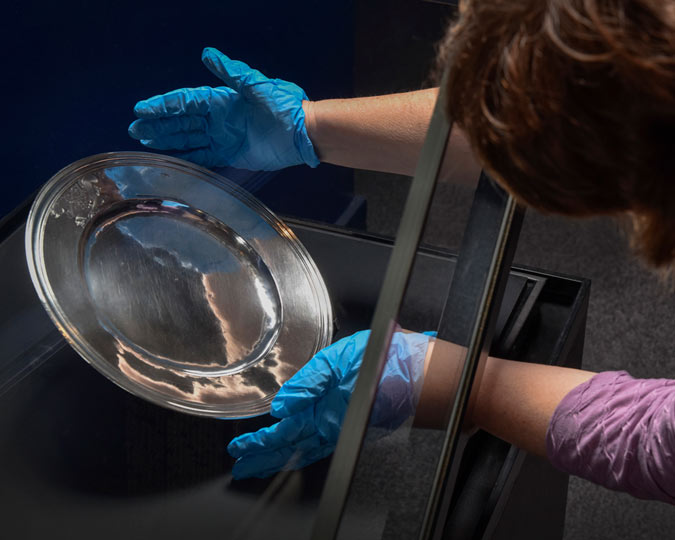Museum collections attract a worrying array of creepy-crawlies, tiny critters that can invade our stores and galleries. They want to chomp our objects, eating London's history out from under us. Find out what's chewing on our collections, and how you can protect your own house from these tricky pests.
As the nights draw in and Halloween approaches, our Collection Care team remains vigilant to the threat of tiny invaders that can infest the museum, sometimes without us noticing. They don’t ask for sweets: they chomp on the artefacts.
This could be a nightmare but, thankfully, we keep a close eye on the goings-on in the dark corners of the Museum of London. By torchlight, we explore the nooks and crannies of our buildings, track down any pest infestations or invasions, and try to keep the creepy crawlies under control. It is important to be able to spot the difference between the pests that cause damage to the artefacts (let’s call them the Tricks), and those bugs we might find in our stores and galleries who are not a threat to our collections (we’ll call these the Treats).
Our work helps us to care for the objects in the museum, but remember that this knowledge can help you to look after your precious things at home too: these pests are found everywhere.
Threatening trick or harmless treat?
Trick!
Grey silverfish are causing a scare this Halloween. These agile critters are a beast new to museums in the UK. They are a gruesome size, up to 15mm long, with their tails and antennae even longer than that. They don’t need damp conditions to thrive so can scuttle throughout a building, concealing themselves in cracks and crevices. Grey silverfish will chomp on anything made from paper so it’s really important to keep them away from these types of collections. Good housekeeping, pest-proofing and careful quarantining will keep these creepy crawlies at bay.
Trick!
This sneaky booklouse would love to chew its way through our archives.
Booklice (Liposcelis sp) can feed on paper, wheat starch (including some adhesives), moulds, herbarium collections (preserved plant species), fungi and other dead insects. Therefore, we are keen to control booklice populations around our library and paper collections.
They are slow eaters, but if left unchecked they can cause extensive damage to books and prints. Booklice are very small, usually around 1mm in length. They are pale yellow, grey or brown in colour. Like most of the tricky threats, they prefer hiding in the dark, so they aren’t easy to find! But they are one of the most common pests that we encounter.
Booklice are often a sign of dampness, or high humidity, and so help us to diagnose other collection care issues with the environment. We can stop the threat of booklice by reducing the humidity of a room, cleaning thoroughly or treating any affected objects by controlled freezing, which kills the insects.
Trick!
These clothes moths have been seen as a bad omen for centuries, featuring in horror stories from Bram Stoker’s Dracula to The Silence of the Lambs. They are small, golden and look harmless but their attack is deadly and often screams can be heard when pulling out winter woollies. Moths (Tinea pellionella and Tineola bisselliella) thrive in warm, dark conditions and anything made from natural fibres is at risk.
At the Museum of London, we have to be extra vigilant and focus our beady eyes on the Dress and Textile Store. Moth pheromone traps are collected and renewed every 3 months. We are able to quickly activate our protective measures at any sign of infestation.
Be aware: it is not the adult moths that damage and eat the textiles it is the larvae! Moths have a life cycle of between 65 and 90 days, during which time they can lay around 50 eggs. The tiny larvae (white grubs) live in silken tubes, leaving trails resembling cobwebs as they burrow into piles of fabric, eating and leaving holes.
Our Collection Care team conducts regular deep cleaning of display and storage areas to make life too uncomfortable for the moths to survive. It helps prevent an outbreak of moths, which could destroy a valuable ancient textile in one egg laying session. The collective noun for a group of moths, by the way, is an "eclipse".
If we find an active infestation on an important treasure, we quickly send it to the isolation unit, preferably at a low temperature. The object is sealed in polythene and refrigerated to -30⁰C for three days or -18 ⁰C for two weeks. With the deep freeze treatment we hope that none of our textiles will become moth-treats over the Halloween period.
Treat!
With a wingspan of 55mm the spooky Dark Arches moth sweeps through the Museum of London, casting murky shadows throughout the galleries. Despite its monstrous size and menacing name, the Dark Arches moth is no danger to you or your beloved clothes. It is a common species found throughout the UK, so no need to run for cover if you spot one of these at home this autumn. A Dark Arches moths feeds on grass stems so isn’t interested in the materials found in our collection stores. Our Collection Care team can breathe a sigh of relief.
Trick!
These are the larvae of Carpet Beetles, known as "woolly bears". They damage carpets, furniture, clothing, and insect collections as they feed on feathers, fur, hair or wool.
The larvae are small, only about 4 millimetres long, covered in brown hairs, and tend to roll up when disturbed. As they grow, they moult. The old cast-off skins may be the first sign of infestation.
Adults are often seen in April, May and June, seeking egg-laying sites. The larva are most active in October before they hibernate. The adult Carpet Beetle feeds only on the pollen and nectar of garden flowers, but lays its eggs in old birds’ nests, fabric or accumulated dust in buildings. It is the larvae from these eggs that do the damage. The life cycle takes about a year, and in hard times the larvae can survive starvation for several months. Carpet beetle damage consists of fairly well-defined round holes along the seams of fabric where the larvae bite through the thread.
At the Museum of London we have to be extra vigilant and ensure that we place blunder traps to keep an eye on the population of carpet beetles. We make sure that woolly bears are spotted early, before they munch, munch, munch their way through the collection.
Treat!
Looks like we've found some shimmering ectoplasm in one of the museum's pest traps. Fortunately, this specimen is a toy purchased from a joke shop.
Ectoplasm is not a threat to museum collections. It does exist, but Ghostbusters! got some facts wrong. In biology, ectoplasm describes the outer layer of cytoplasm that makes up an amoeba.
Ectoplasm is a term also used to describe substances created by, or emitted from, spiritual entities. It is often described as a viscous, gelatinous substance, sometimes translucent, sometimes green. If we did find this on the collections, it is likely that this would be a problem, but luckily we’ve not come across it. Even at Halloween!
Hopefully you can now tell the harmless home invaders from the creepy collections-chewers. If you want to learn more about the work of the Collection Care team, or how you can protect your possessions from these pests and others, see our E-Learning Tools on museum pests.
Happy Halloween! Don't let the moth larvae bite!








